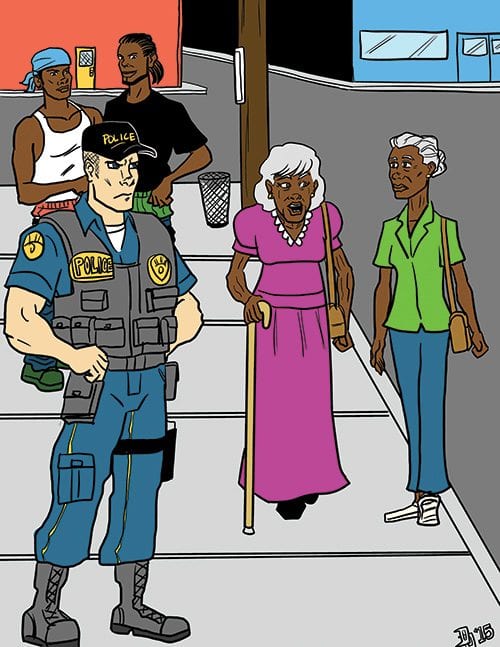
Reports about police brutality against blacks now are so common that even fervent advocates of aggressive law enforcement are beginning to question police behavior. The once-common attitude was to assume that the person victimized by the police had broken the law and thus deserved such mistreatment. Even many blacks had acquired that point of view. But now modern video technology has made every citizen a witness to violent incidents. The recent killing of Usaamah Rahim in Boston foretells some of the perils to society created by excessive police aggression.
Most of the attention now is focused on whether Rahim’s death is what law enforcement officers call “a good kill” — that is whether they complied with all of the rules and regulations that permit them to use lethal force. But clearance of the police on those grounds will not satisfy most black citizens. Police hostility toward blacks over the years has created an aura in the community that any encounter with them is a potential life or death situation.
Why did Freddie Gray run from the police in Baltimore, Md. when he had nothing to hide? Why did Walter Scott run in North Charleston, S.C.? In fact, it is not unusual to see black youths running from the police in many cities just to avoid the humiliation of another stop-and-frisk episode. What was so different in the Rahim case is that he refused to run. Rahim stood his ground.
Rev. Martin Luther King, Jr.’s commitment to non-violence was so persuasive and persistent that people have lost sight of the fact that there are also many African Americans who are willing to fight for their rights. Organized violence did not atrophy from a lack of implementation. People simply realized that a pitched battle would not succeed. Those few attempted were short-lived.
Huey Newton and the Black Panthers attracted considerable press with their dramatic actions from 1966-1982. Less dramatic and less known was Robert Williams, who organized black citizens of Monroe, N.C. into a self-defense unit to confront the Ku Klux Klan. Williams and his wife ultimately were forced to take refuge in Cuba. There also was a black violence group called De Mau Mau in the 1970s formed by black Vietnam veterans who were disillusioned with their status in the U.S.
During the civil rights movement, King was able to induce participants to suppress their instinct for self-defense. The Nation of Islam, the Black Panthers and Robert Williams’ group all asserted their American right to self-defense, but none of them had plans for armed assault against peaceful whites. Nonetheless, the willingness to resort to violence was no means abolished.
Continued police hostility and the consequences of racial discrimination intensify black anger. Some sociologists assert that this anger fuels the high murder rate among young black men. According to Boston crime statistics, the criminal justice system was able to clear only 38 percent of the murders of black men from 2004-2013. The clearance rate for white victims during this period was twice as high at 79 percent. Because of the low clearance rate for black male victims, some gangbangers apparently believe they can get away with murder.
Rahim was a METCO graduate of Brookline High School and a member of a temperate and highly religious family. If, as the police reports suggest, he had planned to go to war against the police, that is indeed an ominous revelation. But it is time for an aggressive plan to change the culture of the police so that they become model public servants instead of potential assailants. The present confrontations could foment a race war.






